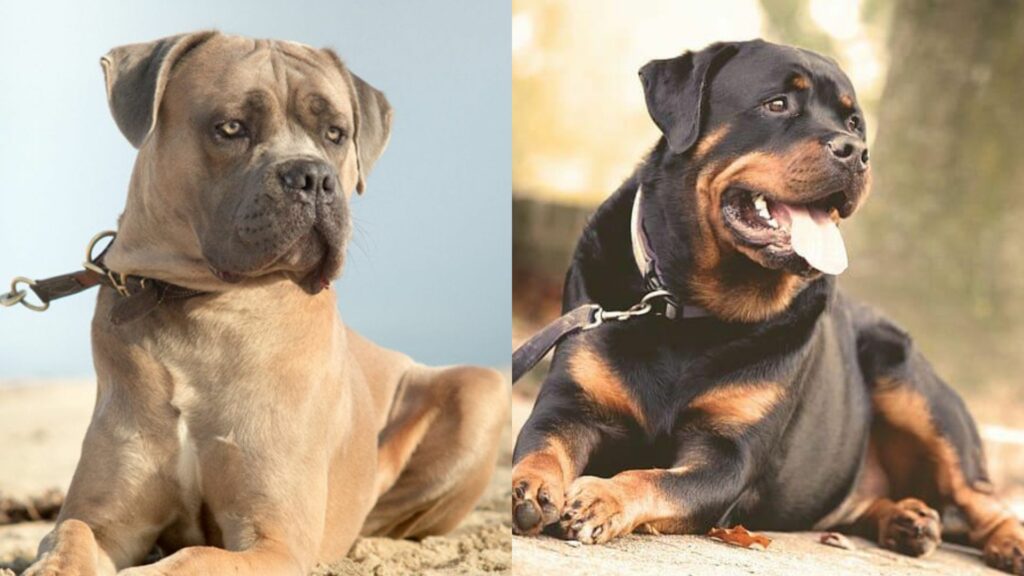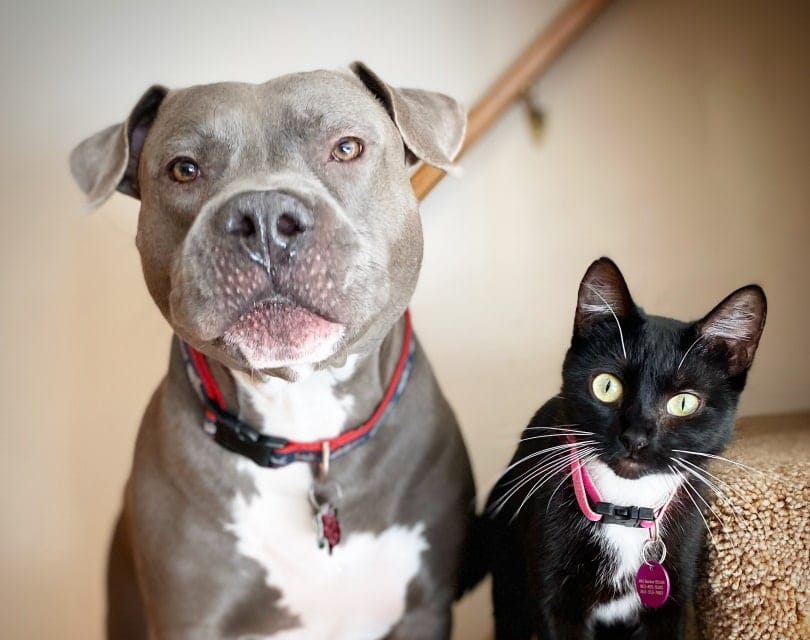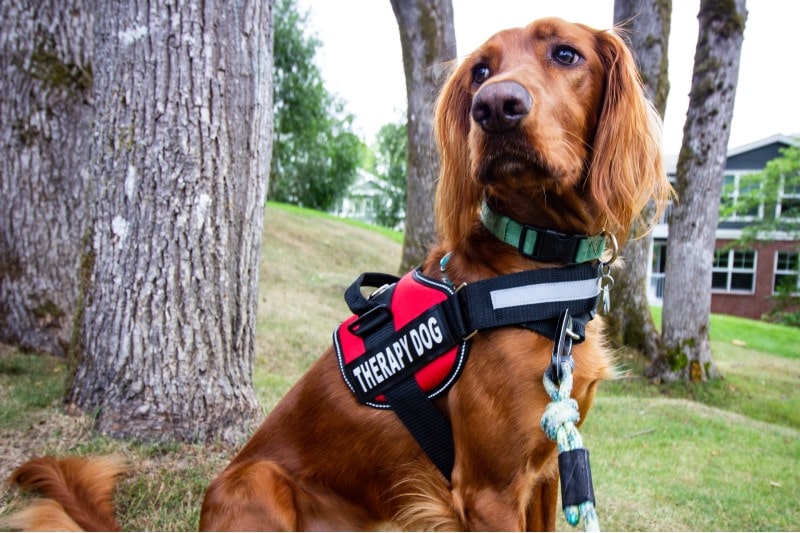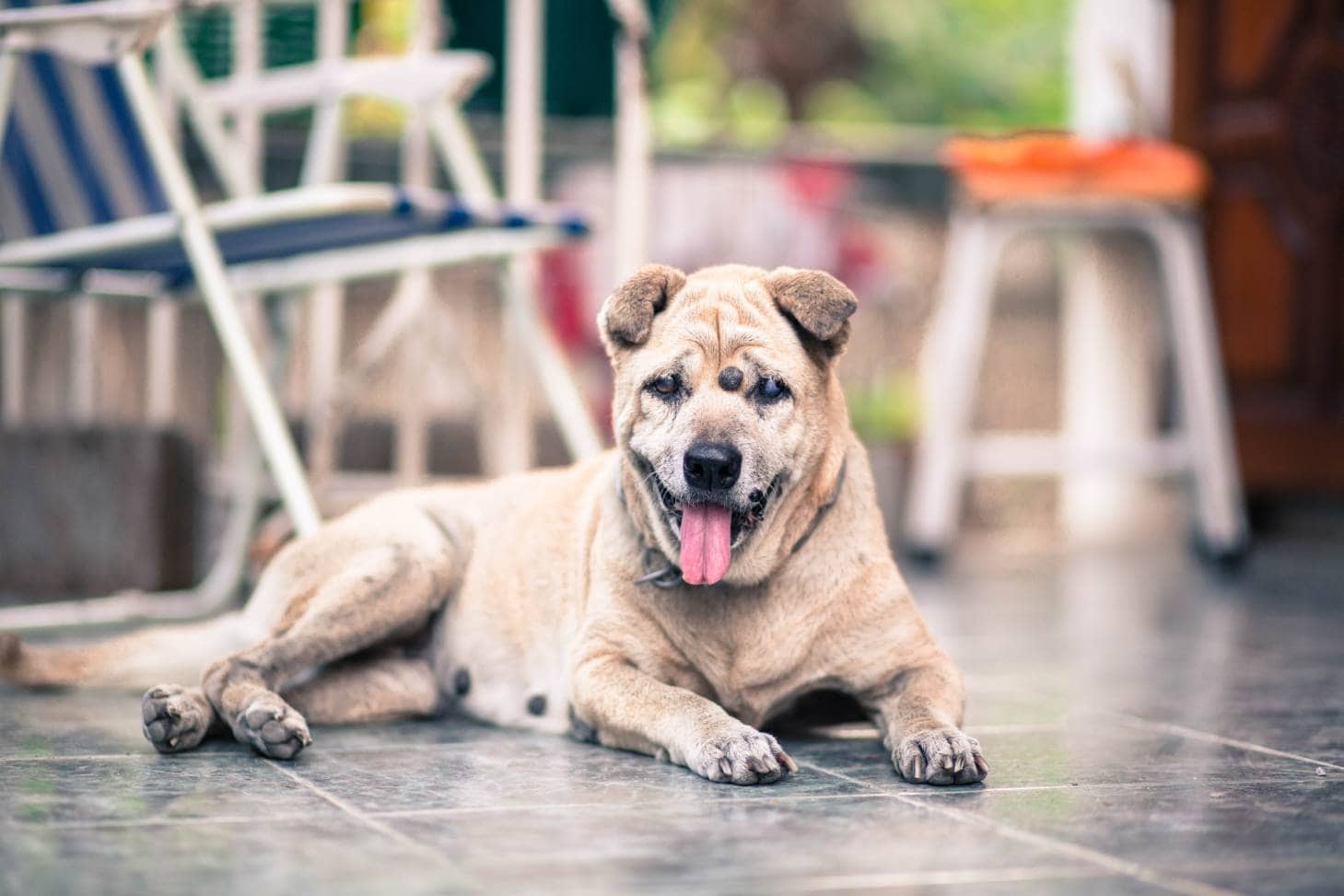Rotticorso (Cane Corso Rottweiler Mix): Info, Pictures, Traits & Facts

Updated on

| Height: | 20–27 inches |
| Weight: | 75–120 pounds |
| Lifespan: | 8–12 years |
| Colors: | Brown, black, brindle, sable, fawn, red |
| Suitable for: | Companion and guard dog. Families with active lifestyles |
| Temperament: | Devoted, affectionate, protective, confident, obedient, friendly |
As the name suggests, the Rotticorso is a mix of a Rottweiler and a Cane Corso. These parent breeds are strong, brave, loyal, and amazing in their own right, giving this hybrid a lot to offer. The Rotticorso is a relatively new breed that not many know about, but their unique mix makes them a great family companion and guard dog, with a great legacy from both its parents. They are both strong working breeds with a strong stature and protective nature, and the combination of these two extraordinary bloodlines gives you the Rotticorso.
If the Rotticorso has piqued your interest, read on to learn more about this fantastic breed and how it can make the perfect pet for you.
Rotticorso Puppies
3 Little-Known Facts About the Rotticorso
1. One of the Hybrids Parents Almost Became Extinct
Rottweilers, one of the parents of the Rotticorso, almost became extinct when they were no longer needed for their jobs to herd cattle due to the development of roads and railways. Fortunately, enthusiasts of the breed kept them going, and a new job was found for them. They gained popularity again by being used in the military and police force.
2. Rottweilers Are 9/11 Heroes
Rottweilers are modern-day heroes. Following the 9/11 attacks, Rottweilers were among the rescue dogs deployed to the Twin Towers site, and they bravely searched alongside other breeds. Their legacy has carried over to the Rotticorso.
3. The Rotticorso is a New Breed
The Rotticorso dog is a relatively new hybrid breed with no history to follow. To understand this breed, we must look to its parents, the Rottweiler and the Cane Corso.
Temperament & Intelligence of the Rotticorso 🧠
Rotticorsos’ temperament can vary because they are hybrid dogs. They can inherit one or a combination of their behavioral traits. The Rotticorso has a devoted and affectionate personality, which makes them great family pets. At first sight, they may appear intimidating, but they are, in fact, loving and delightful. They are well-behaved and eager to please their owners. Along with being highly intelligent, it is a great working dog and easy to train. Coming from a working dog background, they are very active and love to have jobs that keep them mentally and physically busy.
While the dog is loyal and protective, it can lead to suspicious behavior when strangers approach, especially if they have not been socialized from a young age.
Are These Dogs Good for Families? 🏡
This unique hybrid makes a great family companion that will most often form a strong bond with its owners but stay aloof to strangers and other people they don’t know too well. They will likely follow you around your property to see what you are up to and need a strong, confident owner that they can look up to with respect.
Rotticorsos make great guard dogs for your family, but this may result in slightly aggressive behavior toward strangers. Rottweilers, one of the hybrid’s parent breeds, are a popular breed that many people recommend for families with children. That is because of their gentle and affectionate demeanor, and that, paired with their patience, makes them great for children. Having said that, Rotticorsos may be more suitable for older kids that are more aware and respectful towards dogs and are not easily bowled over by an excited and playful Rotticorso,
Overall, Rotticorsos make excellent family pets.
Does This Breed Get Along with Other Pets? 🐶 😽
Rotticorsos will do best with other pets that they have grown up with. Socialization at a young age is very important for your Rotticorso to get along with other pets and dogs. Socialization ensures they meet a variety of other dogs and are exposed to different noises, smells, and environments.
They also have a strong hunting instinct, so they may feel compelled to chase the neighbor’s cat. It’s important to keep your Rotticorso behind a fence in a large yard and keep it leashed when walking.
Things to Know When Owning a Rotticorso
Food & Diet Requirements 🦴
Select a dog food that has been certified by the Association of American Feed Control Officials (AAFCO). Rotticorsos are predisposed to heart disease and should not be fed a grain-free diet as it could increase their risks. Avoid giving your Rotticorso leftovers or animal bones, as this can result in diarrhea, vomiting, loss of appetite, and stomach upset. Pancreatitis can be caused by eating high-fat foods.
Rotticorso puppies should be fed at least three to four times a day and fed a puppy diet until 12 months. Adult Rotticorso should be fed once or twice a day. Supplements can also help keep your dog in optimal health. However, check with your veterinarian before adding any supplements to your pet’s diet. Supplements containing omega-3, 6, and 9 fatty acids support joint, coat, and cardiac health. Formulas containing glucosamine, chondroitin, and MSM are excellent for promoting joint health, while MSM has anti-inflammatory properties that are entirely natural. Probiotics are excellent for gut health.
Exercise 🐕
The Rotticorso comes from a working dog background, and with its active temperament, it will love having something to do that will use up its energy. They generally need up to 80 minutes of exercise a day, which should include at least two long walks. They make ideal companions for people with active lifestyles as they can get their exercise needs from a jog or a hike with their owner. If you need to stay home, your Rotticorso can also exercise in the yard with agility games or old standbys like playing fetch.
Training 🦮
Early obedience training is essential for this large, high-energy canine. They also have protective instincts, which must be kept in check to avoid unnecessary aggression. If the Rotticorso is socialized and trained from a young age, it will most likely develop a secure and consistent temperament.
The Rotticorso is intelligent and obedient, making them relatively easy dogs to train. They respond well to positive reinforcement; any negative reinforcement or punishment can prolong unwanted behavior and increase anxiety.
Grooming ✂️
A Rotticorso is a low-maintenance pet when it comes to grooming and cleaning. They have a short coat, and brushing every two to three days will help keep their coat and skin healthy and clean.
Regularly check their ears and eyes for any infection, sores, or discharge. Because they are active dogs, their nails should naturally file down, but if you hear them tapping on the floor, they need to be trimmed.
Grooming your Rotticorso won’t take too much time and effort, but a visit to the grooming parlor now and then will help ensure that your dog’s fur is well maintained.
Health and Conditions ❤️
Every breed is predisposed to health conditions that may be serious or minor, but having regular checkups with a veterinarian can keep them healthy. Just because a dog is predisposed to a condition doesn’t mean that it will definitely end up with any health issues, but as an owner, it’s essential to be aware. The Rotticorso has a lifespan of 8–12 years, which specific health concerns can impact.
- Entropion: Entropion is a common eyelid condition that causes the eyelids to curl inward, causing the eyelashes to rub against the cornea.
- Demodectic Mange: A skin condition that is transferred from mom to puppy.
- Idiopathic Epilepsy: A seizure disorder that usually appears in dogs around 3 years of age.
- Obesity: Obesity can lead to more serious health issues, so an ideal weight needs to be maintained.
- Gastric Dilation-volvulus (GDV): GDV is a life-threatening condition where the dog’s stomach enlarges and twists.
- Hip and Elbow Dysplasia: Dysplasia of the hip and elbow affects the joints causing severe pain and can often lead to arthritis.
- Cranial Cruciate Ligament Rupture (CCL): Rotticorsos can frequently rupture their CCLs due to their large size and high energy levels. This may require surgery and lifelong joint supplements.
- Osteosarcoma: Osteosarcoma is an aggressive and painful cancer.
- Subaortic Stenosis: Abnormal heart murmurs that may cause death if undiagnosed.
Male vs Female
A male Rotticorso is usually 80–125 pounds, while a female is usually 70–115 pounds. While each dog is different, males and females of a breed will generally have different dispositions. The male Rotticorso is typically more energetic and boisterous during playtime, and they are generally more suspicious of strangers. Females tend to be calmer and mature faster than males.
Both genders make great family companions, as well as guard dogs.
Final Thoughts
The Rotticorso is truly a unique and fantastic mix, but it’s no surprise, given that the parents are extraordinary dogs. Their intimidating appearance may make it hard to believe that this breed is so loving, but this affectionate is primarily for their owners. Like all dogs, they need to be trained and socialized early, especially if they are to be around other pets and children.
Because they are loyal and naturally protective, socialization is vital to avoiding unwanted behavior with a suspicious stranger. This strong and active canine will need regular exercise and training, a healthy, well-balanced diet, and regular check-ups with the vet. A Rotticorso makes a delightful companion to those who are up to the challenge.
Featured Image Credit: Cane Corso-Skox, Shutterstock ; Rottweiler- Pxfuel














